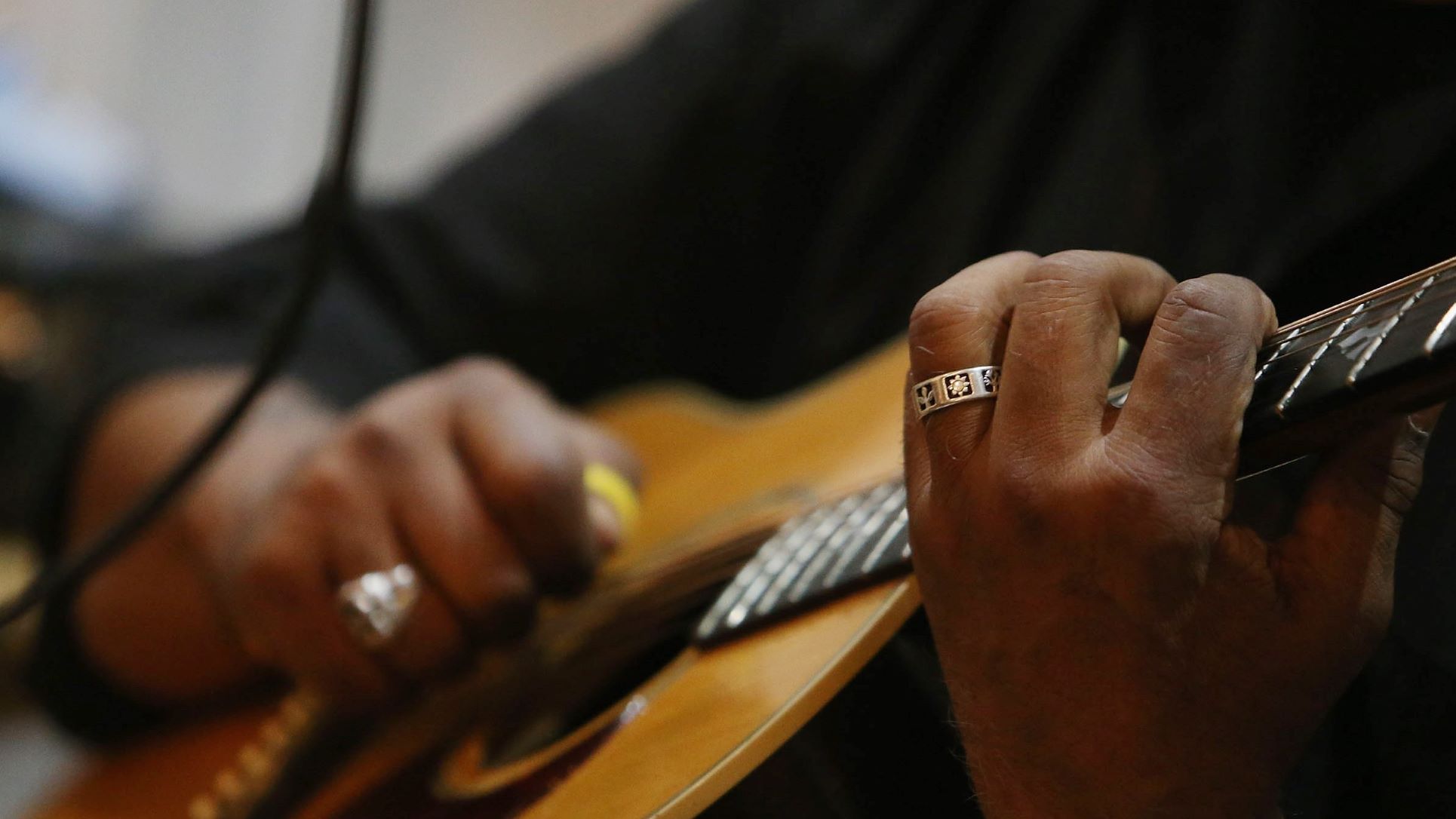Acoustic Blues Musings, Part 2: Hip Tips and Tricks for Better Playing
Add these helpful hints to your arsenal of blues moves.

Playing blues on an acoustic guitar presents challenges as well as opportunities. It takes more mojo to bend a string or play a stretch chord, and getting great sustain isn’t as easy as adding gain to a signal chain. Using such challenges to your advantage is the name of the game. Here are a few tips and tricks to help you unleash your best blues on a “box” guitar.
Slip Sliding Away
Bending strings on a beastly acoustic can be a bitch, so it’s helpful to get a handle on glissando technique, sliding up or down a fret or two to achieve a bending effect.
For example, instead of starting on an E played with the first finger at the fifth fret of the second string, and then meeting the same note by bending the D at the seventh fret of the third string up a step with the third finger, simply slide it up that whole step; then, either make a quick jump back to the former position with the first finger on the fifth fret of the second string, or leave the third finger at the ninth fret of the second string and take advantage of the open E on the first string.

Take glissando technique to the next level and get out of the usual blues patterns by sliding your fingers through blues scales on just one or two strings, rather than playing phrases across several strings. This finger-sliding style facilitates more lyrical, bottleneck-like phrases right off the bat and leads to a deeper understanding of blues theory.
Sustainable Practices
Extended sustain is elusive on any acoustic, but each has its sweet spots. Explore the fretboard chromatically, making mental notes of which notes die fast and which ring out. Use the former as passing notes within phrases; the latter are ideal landing spots.
Avoid palm muting and notice how some notes will trigger open strings to ring out sympathetically, adding harmonic overtones and boosting sustain. If you’re a fingerpicker, using the thumb will naturally lead you to lift your palm. Plus, the thumbnail is ideal for a strong downstroke.

Substitute That Robert Johnson Move
Perhaps the most frustrating thing for the budding blues guitar enthusiast and the gigging pro alike is the classic Robert Johnson-style “Dust My Broom” move involving a basic 1-5 power-chord that then requires additional stretches to hit the 6 and, in turn, the b7 on the string above while keeping the root and 5 in place.
All the latest guitar news, interviews, lessons, reviews, deals and more, direct to your inbox!
Its origins can be traced back to the piano, and it involves a high degree of difficulty on an electric guitar, let alone an ornery blues box or a callous-chewing 12 string. For a respite, try this old trick: Use the second finger to play the root, with the pinkie covering the 5 on the string above. This leaves the first finger to cover the 6 on the next highest string. Leave it there while lifting the pinkie and hitting the b7 up a half step with the third finger, all the while keeping the second finger on the root. This shortcut works rooted on either the sixth or fifth strings.
Focused palm muting while alternately lifting the pinkie is important for the standard shuffle. Experiment with open strings ringing above for a more progressive approach. This substitute still requires significant dexterity, but it’s an awesome alternative, especially for repeated use over the course of a song, a set or an entire gig full of acoustic blues.
Keep an eye on the website for more acoustic-blues tuning and slide tips.
Further reading...
Jimmy Leslie is the former editor of Gig magazine and has more than 20 years of experience writing stories and coordinating GP Presents events for Guitar Player including the past decade acting as Frets acoustic editor. He’s worked with myriad guitar greats spanning generations and styles including Carlos Santana, Jack White, Samantha Fish, Leo Kottke, Tommy Emmanuel, Kaki King and Julian Lage. Jimmy has a side hustle serving as soundtrack sensei at the cruising lifestyle publication Latitudes and Attitudes. See Leslie’s many Guitar Player- and Frets-related videos on his YouTube channel, dig his Allman Brothers tribute at allmondbrothers.com, and check out his acoustic/electric modern classic rock artistry at at spirithustler.com. Visit the hub of his many adventures at jimmyleslie.com
